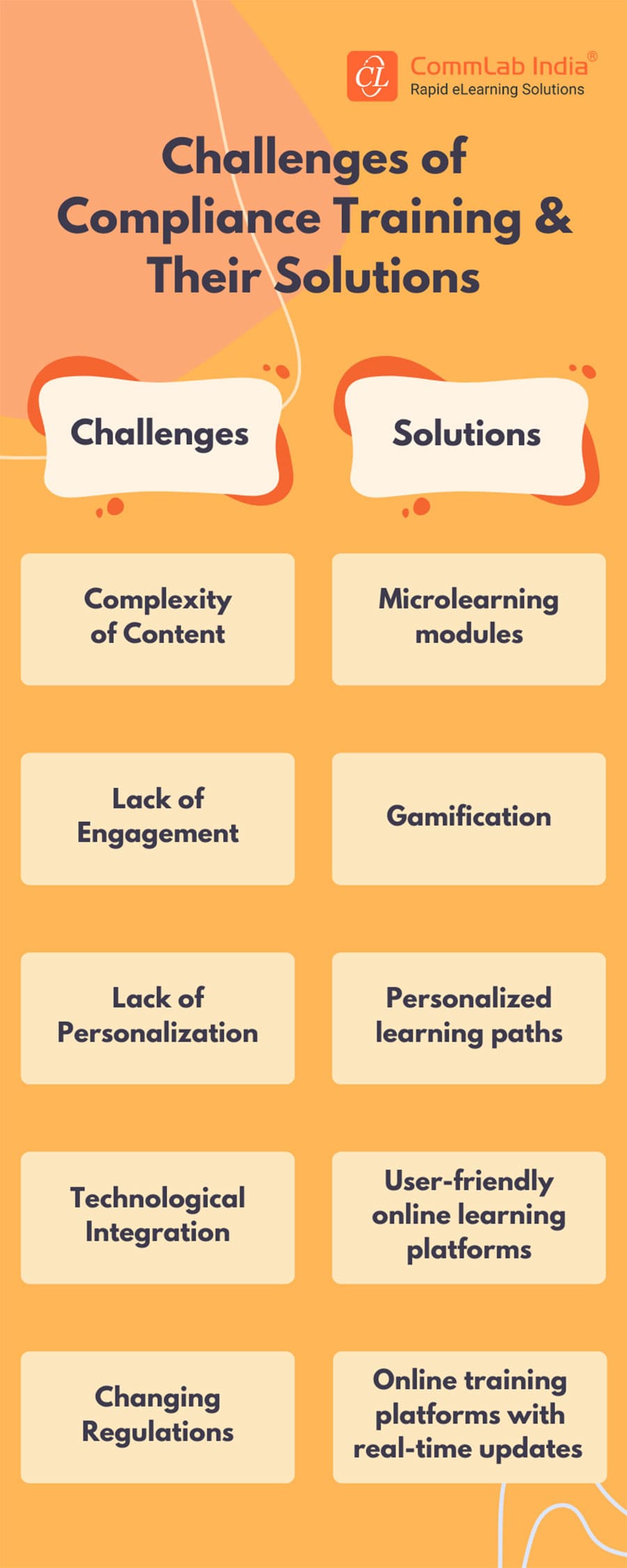What are Challenges in Compliance Training + Solutions [Infographic]
![What are Challenges in Compliance Training + Solutions [Infographic] What are Challenges in Compliance Training + Solutions [Infographic]](https://blog.commlabindia.com/hubfs/blogs/compliance-training-challenges-solutions-info.jpg)
Can you think of a business that was shaken, or worse, brought to its knees, due to a compliance issue? Or maybe a person combating the consequences of a data breach? Well, in today’s world of business, ensuring compliance can be tricky. It isn't just a box to tick, instead, it's a lifeline in a sea of risks. But how can you navigate these shaky waters to ensure that every decision, every action of yours (both organization and employees included), is not just legally sound but also ethically defensible? Well, finding the answer to this question is both interesting and important. And that’s what this blog is going to be about. However, if I have to set the stage right and provide an answer in one word, it’ll be… COMPLIANCE TRAINING.
Yes, that’s the heart of the matter. We’ll be taking a good look at why you should focus on providing effective compliance training, the key elements of compliance training, challenges faced in compliance training and their solutions, and lastly explore how you can design effective compliance training courses. This blog is your power-packed guide for compliance training.
Are you ready for solutions that safeguard not just bottom lines, but reputations and futures? So we begin.
Why You Should Focus on Compliance Training
While there are multiple reasons to pay attention to providing compliance training, in this section we’ll cover some unmissable ones. They are:
- Compliance training serves as a safeguard against legal repercussions, financial losses, and reputational damage for businesses.
- Fosters a culture of accountability, integrity, and ethical conduct among employees, thereby reducing the likelihood of misconduct or regulatory breaches.
- Helps maintain a competitive edge and trust among stakeholders in industries such as finance, healthcare, and technology as it is not just a legal obligation but also a prerequisite.
→ Download Now: Instructional Design Strategies to Create Engaging eLearning Courses
Key Elements of Effective Compliance Training
Understanding Rules and Regulations
Helping your employees understand the laws, regulations, and industry standards that are relevant to their roles is essential. You can cover topics such as data privacy, anti-corruption laws, workplace safety regulations, and more, to ensure compliance.
Creating Awareness about the Risks
The compliance training should focus on enabling your employees to identify the potential risks associated with non-compliance and how to mitigate them.
Focusing on Ethical Decision-Making
Empowering employees to make ethical decisions is fundamental to compliance training. When you instill a moral compass and emphasize ethical dilemmas through compliance training, you cultivate a culture of integrity and responsible behavior. It nurtures the employees’ mindset to make the right decisions that keep them and the organization away from any legal or ethical trouble.
Challenges of Compliance Training and Their Solutions
Since you’ve made it this far, here’s a little bonus tip for you to ensure a high-impact compliance training course.
Compliance regulations are constantly changing. So make sure you regularly review and update your training materials to reflect the latest changes.
Wrapping It Up!
Compliance training is an integral part of their organizational culture. It helps businesses mitigate risks and foster a culture of integrity and trustworthiness that is essential for long-term success. With that said, compliance training presents its share of challenges. But, now you know the solutions. So get ready to ensure some effective compliance training for your employees and climb the ladder of success without any fear! Don’t forget to check out our eBook below on instructional design strategies that help you boost engagement in your training courses.







![10 Tips to Designing Engaging Compliance Training with iSpring [Infographic]](https://blog.commlabindia.com/hubfs/blogs/tips-design-engaging-compliance-training-ispring-infographic.jpg)